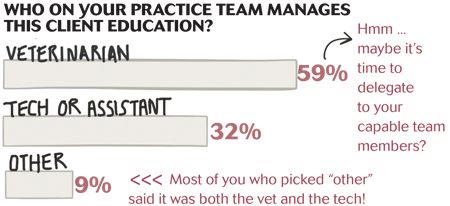No shame in your game: You gave us an earful
New data looks at whats going on between your ears when it comes to otitis management.
From “that smell” to potential ear hematomas and canal ablations, otitis externa can be a clinical challenge for any veterinary practitioner to manage. Which is why we went to the source-you and your team members-for more information about how you handle your tough otitis cases. You know, the whole learn-from-others approach. (We've also included snippets from a Q&A with veterinary dermatologist Wayne Rosenkrantz, DVM, DACVD-more here.)

Q. To clean or not to clean ears in the clinic?
A. Cleaning ears is important, and most cases of otitis externa require some degree of ear cleaning or flushing before therapy. Excess debris and purulent material left in the ear prior to therapy can reduce the efficacy of your therapy. In addition, without cleaning you often are unable to perform a complete examination of the ear canal. -Dr. Rosenkrantz


Q. How important do you think it is to caution owners about the possibility of recurrence of otitis externa?
A. It is extremely important. This is particularly true when you are dealing with underlying primary diseases that are not well-controlled. Without proper control and management of the underlying disease, recurrences are highly likely. In clinical practice this is most commonly due to poorly controlled atopic dermatitis or adverse food reaction cases. -Dr. Rosenkrantz


The dvm360 Clinical Updates: Otitis study was sent by email to subscribers of dvm360 magazine, Vetted and Firstline. The survey generated 736 responses, creating a margin of error of about 3 percentage points (although sample sizes-and statistical reliability-on individual questions may be considerably lower). Respondents were able to download a free article titled “Canine otitis: Treatment advice from the ear tip to the tympanic membrane.”